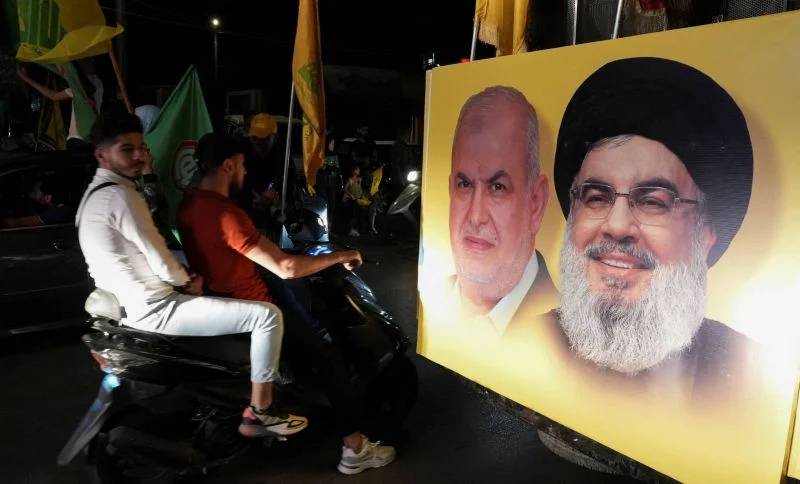
A convoy of Amal-Hezbollah supporters in Nabatiyeh, south Lebanon, May 15, 2022. (Reuters/Issam Abdallah)
Initial results
In Sour
Hezbollah-Amal’s Hope and Loyalty list secured all four seats representing the Shiite community in Sour district, with incumbent MPs Ali Khreis and Inaya Ezzeddine of the Amal movement, and incumbent MP Hussein Jashi, and Hassan Ezzeddine for Hezbollah.
In Zahrani
The same list secured the three seats in Zahrani, with Parliament Speaker Nabih Berri and Ali Osseiran securing the two Shiite seats, and Michel Moussa, also an incumbent MP in Berri’s bloc, retaining the Greek-Catholic seat.
What to expect next
- The official results will reveal the number of blank ballots cast in the constituency, which, along with abstentions, could be read as disapproval of Hezbollah-Amal on the part of the constituency’s voters, more than 80 percent of whom are Shiite. The city of Sour had been very active during the Oct. 2019 uprising, until the demonstrations were violently crushed.
- We must await the final number of preferential votes to analyze in detail Hezbollah voters’ potential disenchantment with the Amal movement, one of the parties that the Oct. 17 uprising accused of corruption.
- On the other hand, the total number of votes obtained by the Together for Change list, which is close to the Oct. 17 protest movement, and the two other incomplete lists that ran in the South II constituencies, might suggest the future chances for a united opposition list to make a breakthrough.
Things to remember
While the South II constituency remains fully controlled by Hezbollah and Amal, a tendency to abstention has been evident since the 2018 election, which suggests some voter detachment or discontent. The alternative lists had little chance of winning a seat, especially when taking into account the pressure, threats and intimidation exerted on their Shiite candidates. In this vein, one must recall the incident in Sarafand on the day the protest movement announced its list, when the list members were stopped by a member of the Amal movement, who blocked the highway and fired in the air in an effort to intimidate them.
*This analysis is based on figures that are not yet final and will be updated with the official results.
It was originally published in French in L'Orient-le Jour, translated by Joelle Khoury